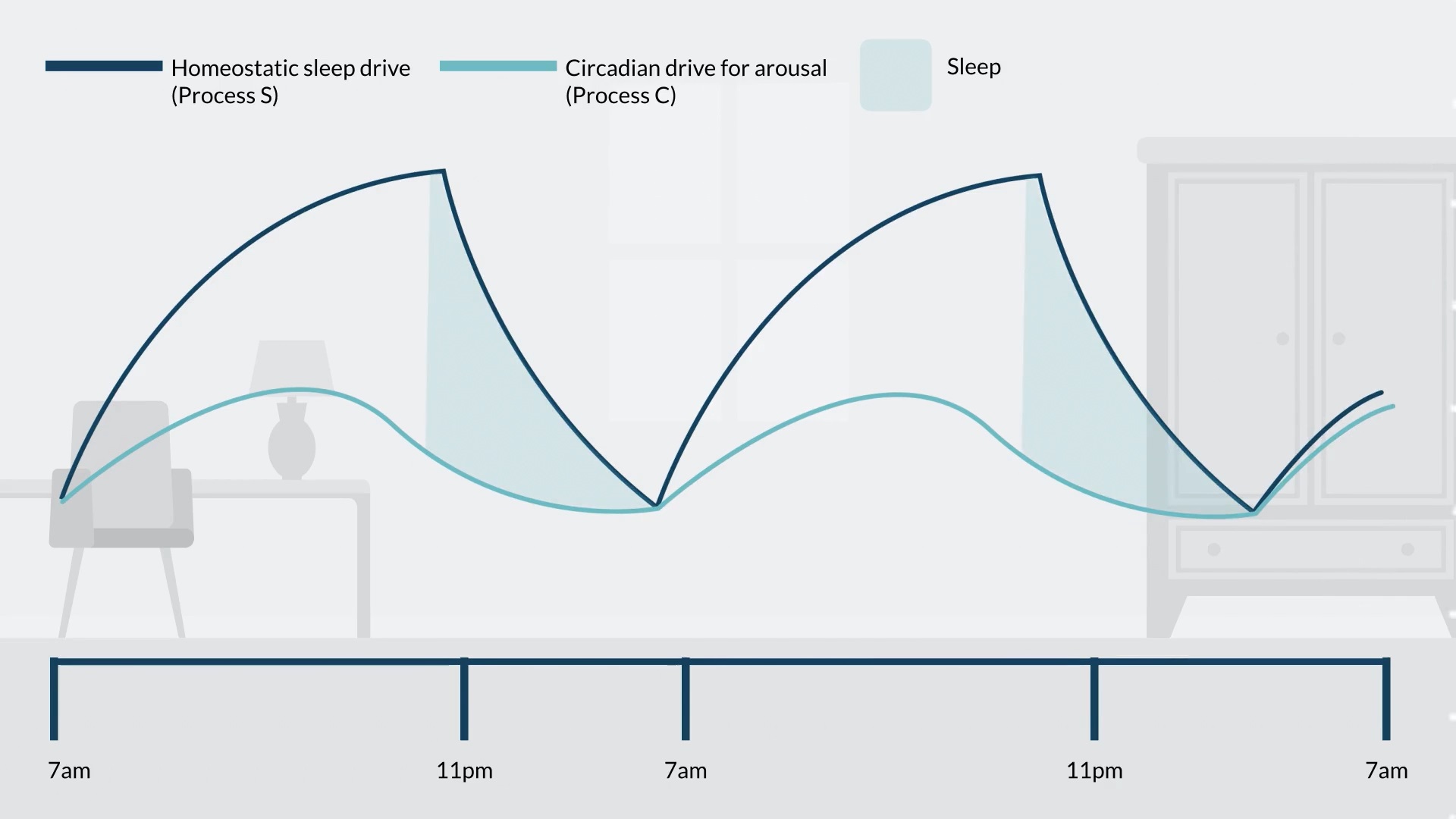Sleep Homeostasis and Circadian Rhythms
We already learned about the importance of sleep quality and the different stages of sleep we go through as part of our biological clock. Let’s now look at the two key biological systems that are at the root of good sleep.
In summary, there are 2 main systems regulating our sleep: Process S and Process C. Both processes work together, which lead to an ideal sleep window (or sleep gate). When our sleep pressure is high (due to being awake for a long time) and our circadian drive for arousel (level of alertness) is the lowest, thats the moment we have the easiest time falling asleep.
However, both processes can be influenced and disregulated. Sleep is not only affected by what we do during the night, but also by what we do during the day. If we take a nap during the day, we "use" some sleep pressure already. Sleeping is very efficient in lowering the sleep pressure, which means that the sleep pressure will be much lower if we take a nap during the day. While there might be still enough sleep pressure at the start of the night to fall asleep (however, it might already be a bit more difficult), it will be very difficult to fall asleep again if you wake up during the night after you already used most of your sleep pressure since the sleep pressure is just too low.
The human circadian rhytm is a near 24-h rhythm influenced by several stimili called "zeitgebers", which help us synchronize to a day-night rhytm but can also destabelise and desynchronise our internal clock if we get exposed to those factors at the wrong time. Exposure to light is the most important one, but physical activity and regular food intake are other examples of factors influencing our circadian rhytm. A well-synchronised internal clock will benefit us as it helps to feel sleepy when it is time to go to sleep and feel alert when we need to be awake. It is possible to advance or delay our circadian rhythm by adapting the light exposure and other synchronizers. When you expose yourself to light in the morning (e.g. morning walk after sunrise), you are more likely to advance your rhythm. This could be useful to reduce or prevent jetlag. However, when you expose yourself to light late in the evening, you’re most likely delaying your rhythm. This is what happens during the weekend with many people, particularly late chronotypes. They stay up later than usual and delay their clock, resulting in a “social jetlag” the following Monday. Besides, the adaption to cues from the environment is limited to certain level. When the rhythm of the environmental cues changes to fast, the circadian clock does not have the time to adapt and a misalignment will occur. This also implies that adjusting our sleep takes time! You can not expect impressive results over one or 2 nights!

